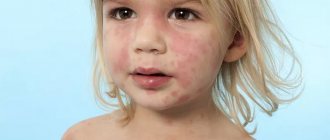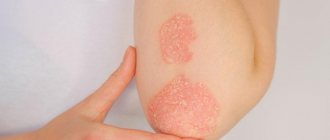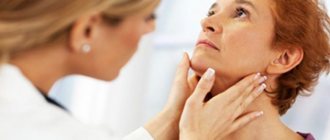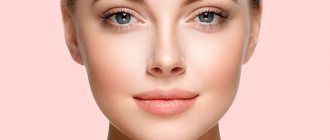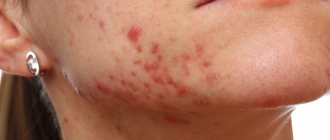June 28, 2020
Itching with psoriasis is one of the most annoying symptoms. It is exhausting and reduces the quality of life. If the cosmetic manifestations of the disease can be hidden by clothing, then there is no hiding from the itching. It becomes a consequence of excessively rapid division of epithelial cells and their keratinization. The cells layer on top of each other, causing inflammation, dryness and itching. Sometimes it can be perceived as a slight tingling sensation, but sometimes it leads to the desire to scratch the skin until it bleeds.
Medicines for the treatment of psoriasis
Systemic therapy for psoriasis is aimed at reducing the proliferation of skin epithelium, stabilizing the keratinization of skin cells and cell membranes.
For this purpose, drugs based on vitamin A (retinoids) and cytostatics are used. The most modern treatments use so-called biological products that neutralize substances that cause inflammation. For many years, Ural irradiation has been used - treatment with ultraviolet rays of group B (in solariums, rays of group A), which reduce inflammation and promote the death of altered cells. PUVA therapy is the simultaneous use of ultraviolet radiation and a special substance that increases the skin's sensitivity to it.
An effective remedy for psoriasis
Local treatment is no less important than systemic treatment. It helps reduce skin inflammation. Drugs are prescribed depending on the stage of psoriasis.
Progressive stage
- exfoliating ointments and lotions
- anti-inflammatory hormonal ointments with calcitriol
- emollients to reduce itching and dry skin
Stationary stage
— UVB therapy
— concentrated ointments for exfoliation
- emollients to restore skin and reduce dryness
Regressive stage
— concentrated ointments for exfoliation
— emollients to restore skin and reduce dryness
Recommendations for eliminating symptoms of the disease
Effective treatment of psoriasis is only possible with an integrated approach. It is important to take maximum precautions to reduce the risk of exacerbation of the disease. So, it is recommended:
- avoid injury to the skin;
- avoid hypothermia;
- to refuse from bad habits;
- avoid stressful situations;
- promptly treat infections and concomitant diseases;
- Avoid prolonged exposure to direct sunlight.
Patients with psoriasis need to be especially careful in observing personal hygiene requirements. If you take a shower or bath, then:
- use products without dyes and fragrances;
- choose a mild shampoo;
- avoid using rough sponges, creams, gels with abrasive particles;
- Avoid hard soap, as it dries the skin too much;
- adjust the water temperature to keep it warm;
- stay in the water for no longer than 10-15 minutes;
- use a soft towel, do not rub or scratch the skin.
After a shower and bath, it is recommended to use special body moisturizers. Try to comb your hair as little as possible so as not to irritate the surface of your scalp. The same applies to blow drying. If you cannot do without it, then choose a warm or cold stream.
Choose clothes that are light, made from natural fabrics, and have a loose fit so that they do not restrict movement and do not chafe.
In summer, you should not sunbathe for too long. To protect your skin from UV rays, apply sunscreen with a high SPF factor.
Psoriasis cream
Creams and ointments for psoriasis have different purposes and are used at different stages of the disease. Hormonal anti-inflammatory ointments and creams are used to stop inflammatory processes in the skin. There are several classes of hormonal drugs. They have different absorption abilities and different activities. When used in children, they try to avoid applying hormonal drugs to the face and neck area, the area of skin folds - places where the skin is thinner. Local preparations based on calcipotriol (a derivative of vitamin D) also have an anti-inflammatory effect. This is a later generation of drugs. Currently they are not used during pregnancy and breastfeeding.
Salicylic ointment and salicylic acid-based lotion are designed to remove skin flakes with severe peeling. Salicylic acid not only has an exfoliating effect, but also increases the effectiveness of topical hormonal medications. In the stationary and regressing stage, when inflammation has become less active, salicylic acid-based products are used in higher concentrations.
Products for restoring skin structure and eliminating dryness are used throughout the entire treatment period, and also in conjunction with ultraviolet irradiation to reduce skin itching. After the exacerbation has stopped, these products help maintain the protective properties of the skin and reduce the risk of new rashes.
Causes
The exact cause of the disease is still not known. Currently, scientists identify several theories about the causes of psoriasis. These include:
- genetic predisposition;
- metabolic disorders;
- immunity disorders;
- focal chronic infection.
The development of the disease is based on several interrelated factors. Often, even in people with a genetic predisposition to psoriasis, it may not make itself felt for many years.
Factors influencing development:
- severe or prolonged stress
- alcohol;
- hormonal disorders;
- metabolic disorders;
- taking certain medications;
- infections;
- skin damage (burns, cuts, injuries);
- other factors.
When reacting to negative factors, foci of inflammation form in the skin, and the processes of cell division and maturation are disrupted. Cells begin to actively divide, the skin in places of inflammation thickens, forming papules (nodules) of bright pink color, which merge into so-called psoriatic plaques, covered with scales. In the absence of treatment, a significant surface of the skin is gradually affected, and inflammation spreads to the nails and joints.
In fact, the results of the effects of all causes of psoriasis can be combined into two groups: impaired division of skin cells and changes in the functioning of the immune system.
All external factors (ecology, stress, trauma) only aggravate the course of the disease, but cannot act as a single cause.
Why are neurodermatitis and psoriasis the same thing?
Both diseases are not contagious and there is no danger to people in contact. The severity of both diseases always depends on the psychological situation. Stress, resentment, feelings of loneliness and unfulfillment in life serve as an impetus for exacerbation and progression of the disease, and slow down recovery. Another common feature is that climatic therapy with the sun and sea, physiotherapy, acupuncture, and psychotherapy help very well.
For both pathologies: when a person undergoes treatment under the guidance of an experienced dermatologist and takes the treatment prescribed in the clinic, it is possible to cope with the disease without the use of hormones.
There are proprietary non-hormonal methods that can be completed at the Moscow PsorMak Dermatological Center. Sign up for a consultation by phone or online and start moving towards health. October 25, 2020
Author of the article: dermatologist Mak Vladimir Fedorovich
Symptoms of psoriasis on various parts of the body
The clinical symptoms of psoriasis in the arms and legs have characteristic features. The following symptoms indicate the formation of psoriatic lesions on the upper and lower extremities:
- A characteristic papular rash, which is most often localized on the knees and elbows, on the inner thighs and forearms.
- With mechanical impact on psoriatic plaques, increased peeling is observed, and the papule itself in appearance resembles a stearin stain.
- When the keratinized scales are completely removed, a shiny thin film is visualized on the surface of the plaque.
- The Auspitz phenomenon occurs. When a thin psoriatic film is removed, a moist surface is visualized on the surface of the plaque, covered with droplets of blood resembling dew. Blood drops do not merge with each other, but are located separately from each other.
- In addition, when psoriatic lesions form in the area of the legs and arms, new foci of papular rash tend to appear in those places that were previously damaged by combs, abrasions and cuts. This condition is called the Koebner phenomenon.
Symptoms of scalp psoriasis
The location of the papular skin rash in scalp psoriasis is the occipital and frontal zone, as well as the area behind the ears. Most often, psoriatic lesions spread along the hairline. Initially, psoriatic plaques are small in size and isolated in nature. As the disease progresses, the pathological structures increase in volume and merge with each other, spreading over the entire surface of the scalp. At the stage of initial changes, psoriatic peeling resembles seborrhea of the scalp. Additionally, intense itching and visible skin irritation occur. Unlike seborrhea, psoriasis does not cause hair loss.
Symptoms of nail psoriasis
An alternative name for nail plate psoriasis is onychodystrophy. This form of chronic dermatosis develops in 50% of cases in people with cutaneous psoriasis. Characteristic manifestations of this disease include:
- Complete or partial separation of the nail plate from the bed;
- Rapid keratinization and proliferation of the subungual epithelium;
- Inflammatory damage to the soft tissues located around the nail plates;
- The appearance of small psoriatic plaques around the nails;
- Small subungual hemorrhages of black or brown color.
Unlike fungal nail infections, with psoriasis there is no unpleasant odor, the nail plates are not deformed, and the nails themselves acquire a yellow tint.
Drug therapy with Akriderm drugs
Of all the Akriderm preparations presented, it is more advisable to use Akriderm SK ointment to combat psoriasis. This is a combination ointment containing both glucocorticosteroid and salicylic acid. Thus, it affects the source of inflammation in several ways:
- has an anti-inflammatory effect;
- provides antiseptic effect;
- has antiallergic properties;
- eliminates horny layers.
Salicylic acid promotes deeper penetration into the site of inflammation through skin thickened by psoriasis, where the glucocorticosteroid delivers a powerful therapeutic blow. Thanks to this thoughtful composition, Akriderm SK ointment acts quickly and has a favorable safety profile. It can also be used on the scalp. [9]
links to sources
- D.K. Nazhmutdinova. Clinical manifestations and treatment of psoriasis. Medical Council, No. 4, 2007, pp. 15-20.
- World Health Organization. (2016). Global report on psoriasis. World Health Organization.
- Berdnikova E. R. On the issue of the immunopathogenesis of psoriasis / Berdnikova E. R., Filimonkova N. N., Tuzankina I. A. Immunology. Allergology. Infectology. 2004; 5:27–30.
- Kungurov N.V. Peculiarities of inheritance of psoriatic disease based on pedigree analysis / Kungurov N.V., Filimonkova N.N. et al. Modern. problem dermatovenerol. im-munol. and medical cosmetologist. 2009; 3:44–48.
- Gudjonsson JE, Elder JT Psoriasis: epidemiology // Clin. Dermatol. 2007; 25 (6): 535–546.
- Elder L. et al. The association between smoking and the development of psoriatic arthritis among psoriasis patients // Ann. Rheum. Dis. 2012; 71(2):219–224.
- V. A. Molochkov. Psoriasis and psoriatic arthritis. Clinic, diagnosis, treatment. A manual for doctors. Moscow, 2015.
- Batyrshina S.V. Glucocorticosteroids for local use in the modern strategy for the treatment of inflammatory dermatoses in pediatric practice // Practical Medicine, 2014. No. 9 (85). pp. 94–102.
- Instructions for medical use Akriderm® SK.
Itching and its causes
The severity of the itch is measured on a scale of 1 to 10 (with 1 being slightly itchy and 10 being itchy until it bleeds). Individual areas and the entire body may itch.
Common causes of itching:
Chocolate is a common trigger for itching
- secondary infections;
- independent use of irritating ointments, creams (especially hormonal ones: topical corticosteroids);
- disturbances in the functioning of the endocrine system;
- psychogenic and neurogenic processes;
- associated allergic reactions;
- food products (coffee, tea, cocoa, chocolate, alcohol, sharp cheeses);
- household chemicals;
- sudden change in climate and air temperature;
- unfavorable production conditions.
The danger for a patient with psoriasis is that these areas should not be scratched . In this case, there is a danger that spots will appear at the scratching sites: the Koebner phenomenon. Therefore, itching must be eliminated.
How should you wash skin affected by psoriasis?
Photo: madeaw_ec / freepik.com
While washing, try not to rub or stretch the skin.
It is better to give preference to showers rather than baths, as they dry out the skin. However, to relax, you can sometimes take a bath, but provided that it is not too long and the water is not very hot - a maximum of 37-38°C.
Soap should be neutral and fragrance-free.
After washing, do not try to remove dead skin on your elbows and knees.
Dry your skin with a towel very carefully, pressing it lightly against your body.
Thoroughly dry all folds and hidden areas of the skin. Pay special attention to the ear canals and the skin behind the ears, armpits, folds of skin under the mammary glands, the umbilical area and groin, as well as the skin between the toes.
Homemade ointments
You can make a cure for psoriasis yourself at home, but ointments prepared according to folk recipes are not as effective as pharmaceutical preparations. They are recommended to be used only during remission.
It is best to carry out home therapy when the main treatment is completed and the result is consolidated.
To prepare homemade ointments, lanolin, honey, aloe juice are used, and the base is baby cream.
Therefore, the funds are inexpensive. Natural ingredients help soften the skin and reduce residual itching. Use herbal medicines up to 4 times a day.


